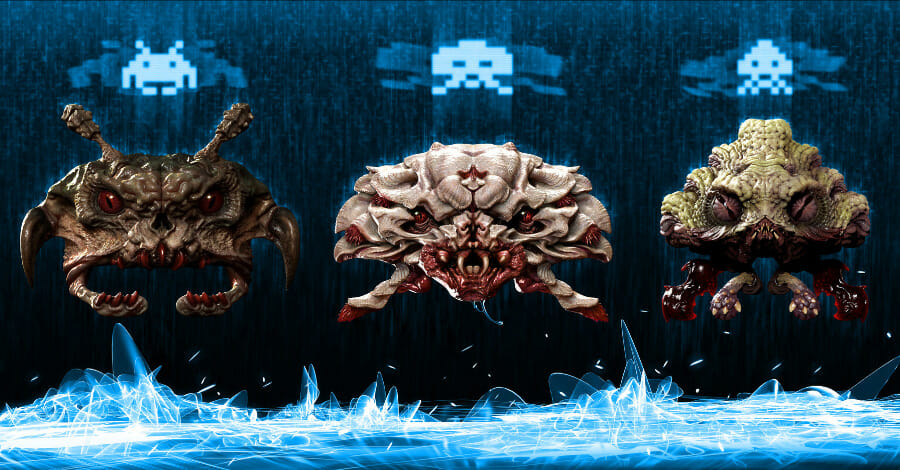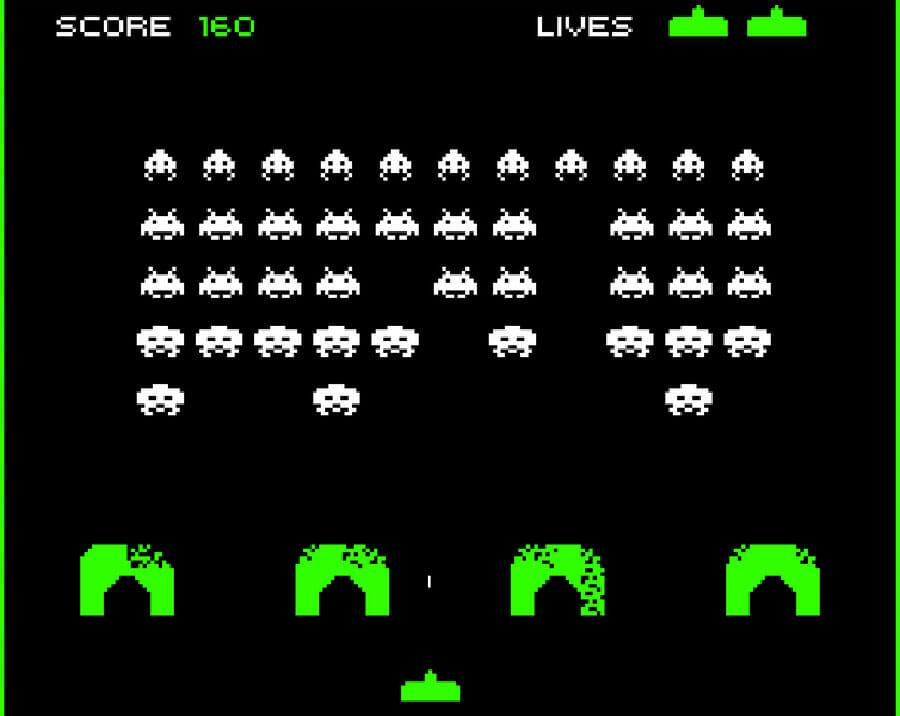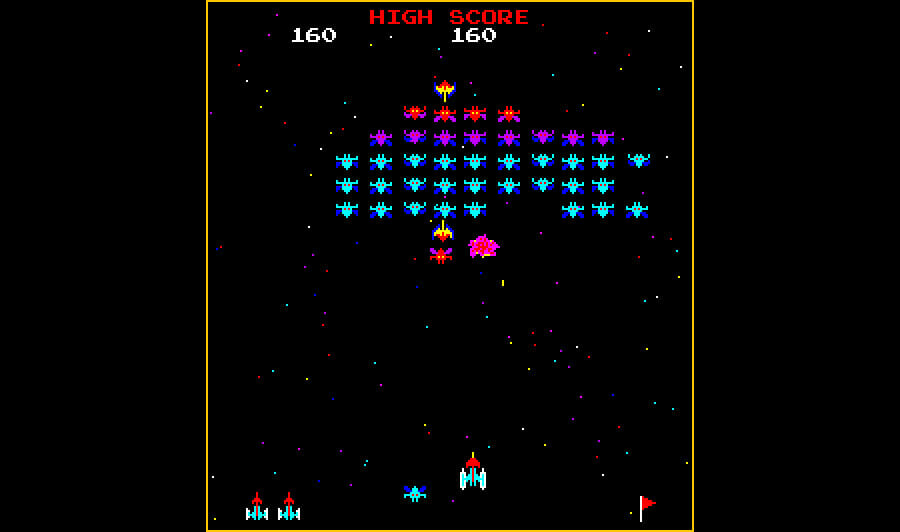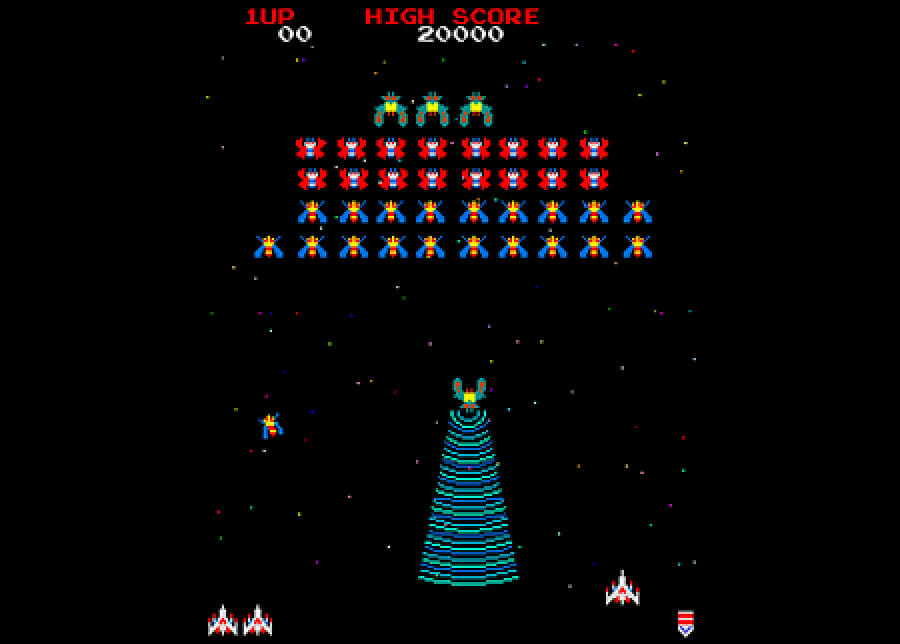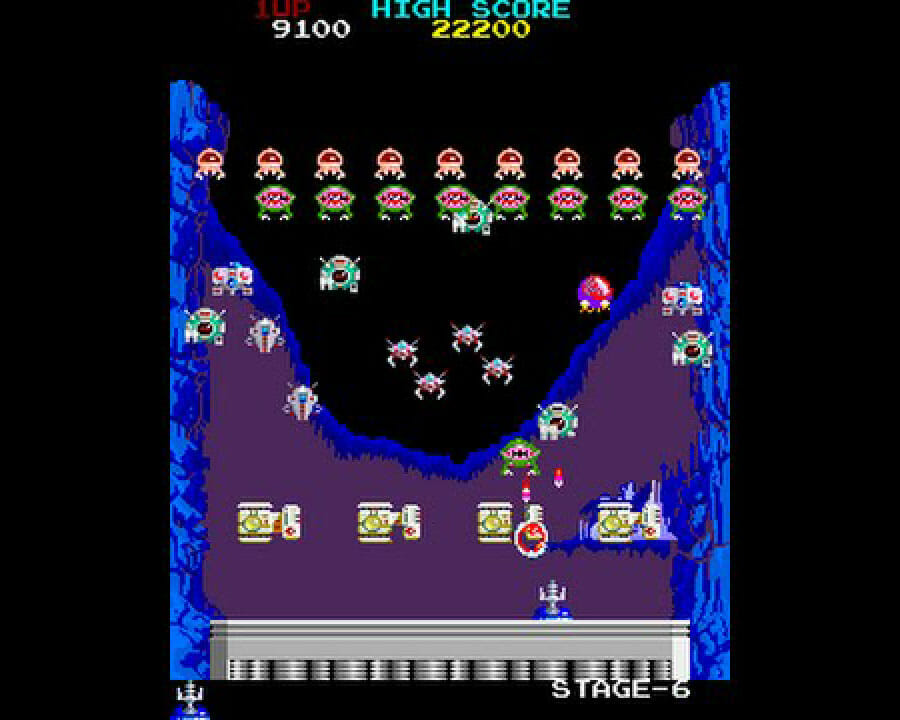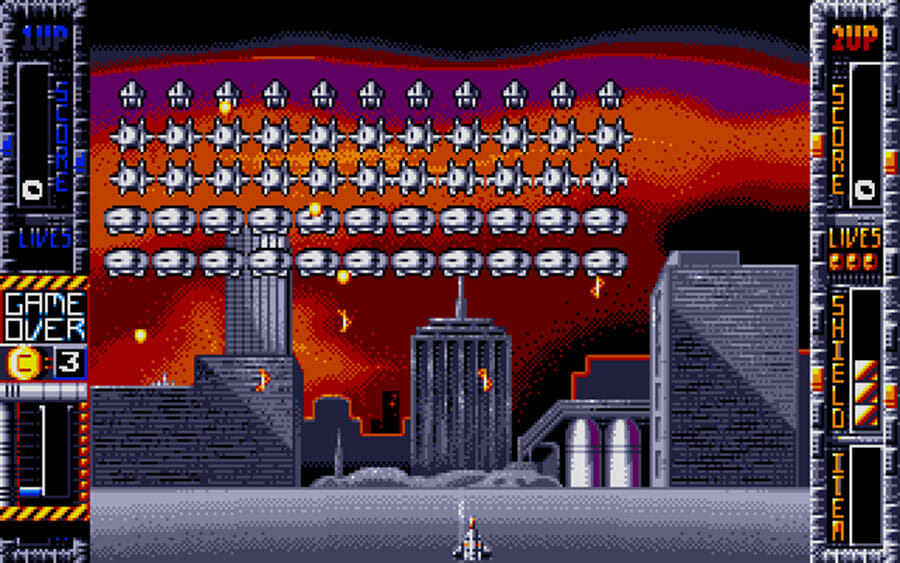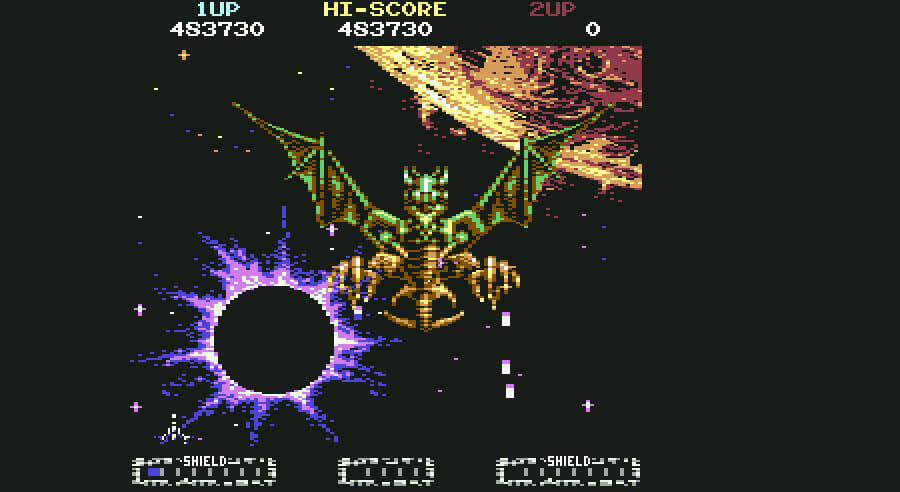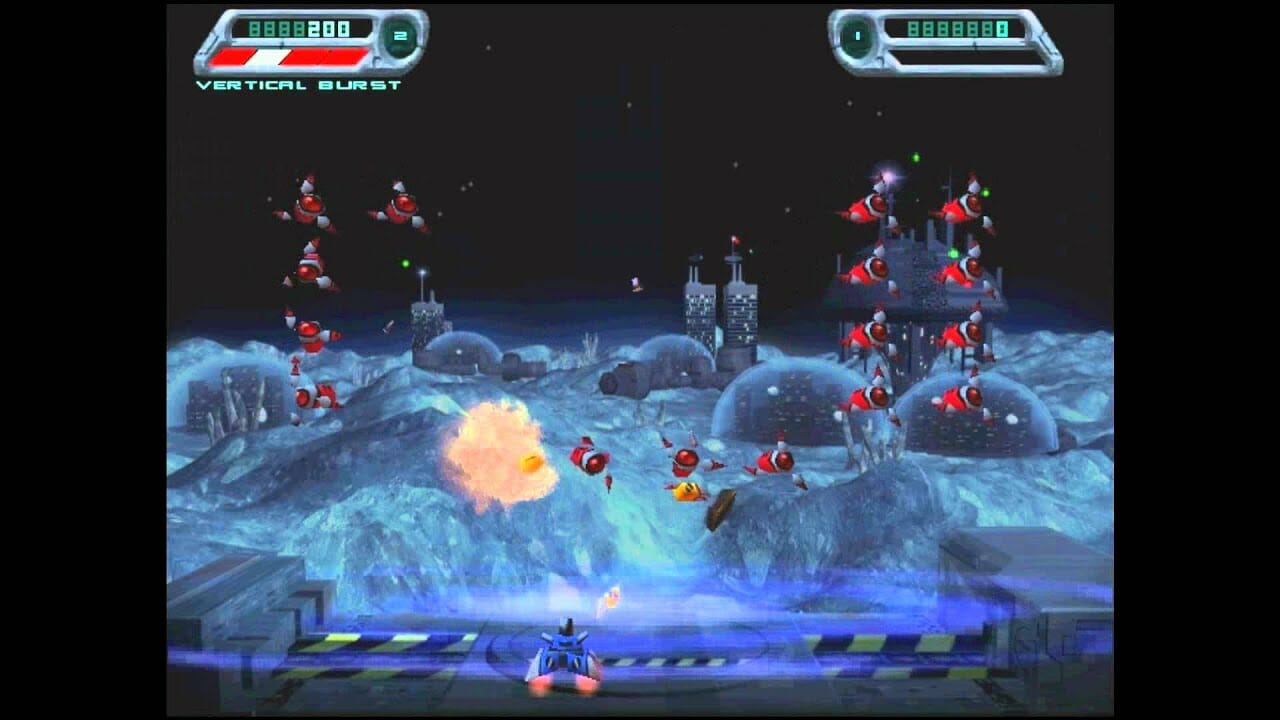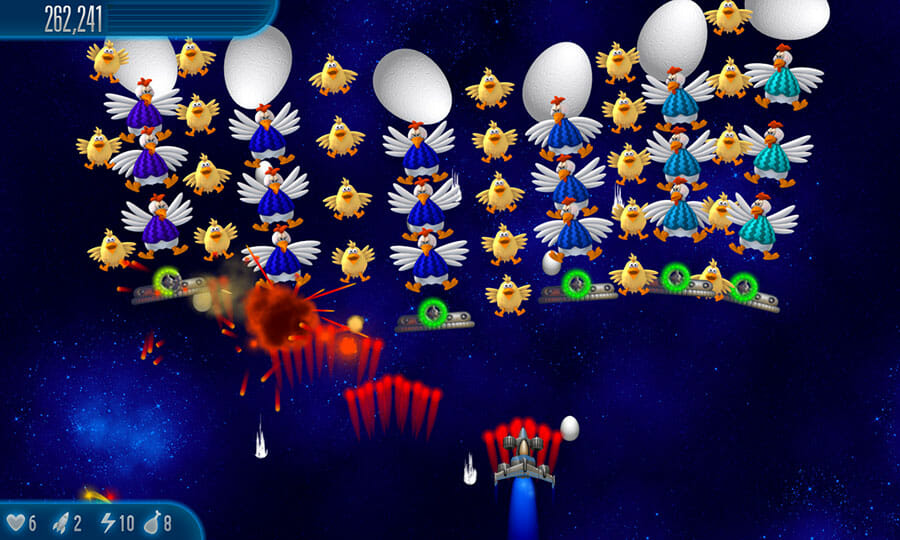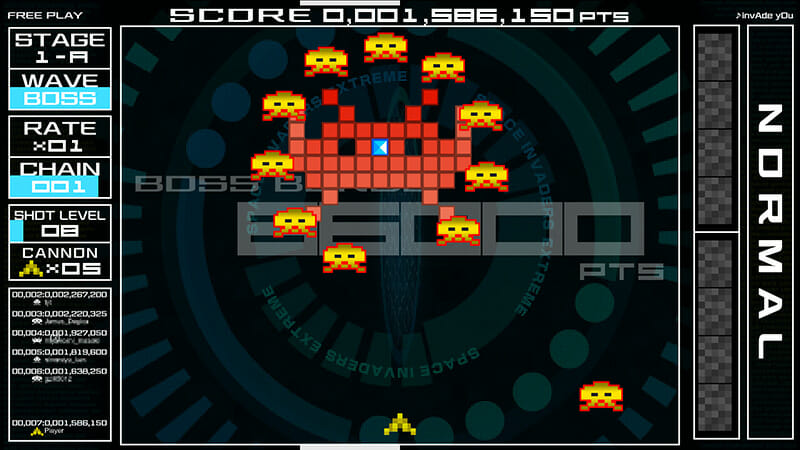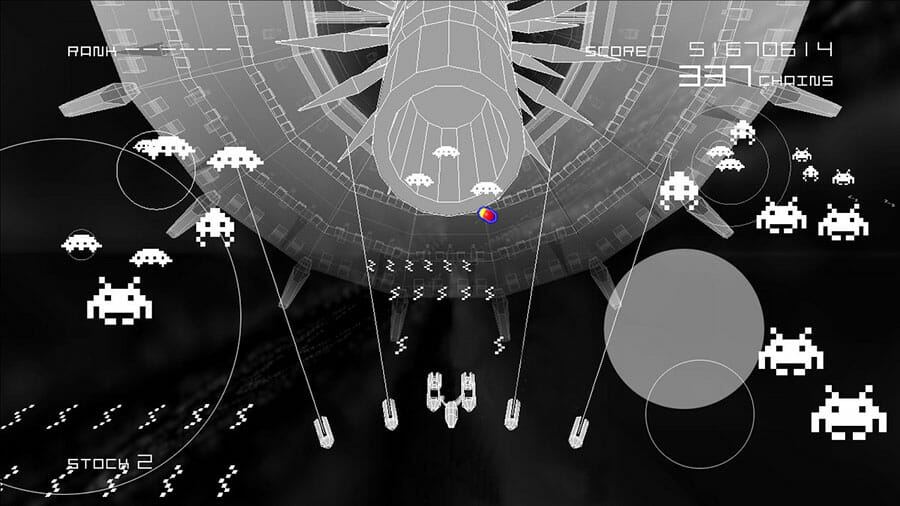Another one of the genres I would like to examine in this series where I delve into the roots of video games is the shoot’em up (a.k.a. shmup) genre. Shoot’em ups were one of the most common genres of my childhood years in the 80’s. While they are mostly built on the simple premise of “shooting the enemies on the screen” this genre also has many sub-genres. As you all know the oldest ancestor of this genre is the 1978 arcade game Space Invaders. Along with Pac-Man these two are the biggest icons of arcade gaming.
However Space Invaders is a much different game than the usual shoot’em up. Upon a bit of research I’ve come to realize that this genre is specifically called the “fixed shooter”. This is to say that these are games where you stay on a non-moving screen and shoot enemies while mostly moving along a single axis. I won’t delve too much into the contemporary shoot’em ups that usually have moving screens. Instead I will begin this historical examination with the specific sub-genre of the “fixed shooter”. By doing this we will be able to witness how the genre has evolved and how it has affected other shooters in the decades that followed.
1978 – Space Invaders
One of the 70’s arcade cabinet giants Taito, a Japanese company, had to respond to the rise of the American companies of the era. Classics like Atari, Pong, and Breakout had started dominating the arcade halls and had no intention of slowing down. The rapidly evolving chipset technology of the era was allowing for a lot of innovation. Nonetheless there weren’t many current trends in the world to inspire the Taito developers. Two things were certain: Star Wars had made space battles fashionable and they had to make a game more action-packed than Breakout. One of the superstar game developers of the era Tomohiro Nishikado had developed many games for arcade machines including several sports-themes games as well as two top-selling target shooting games called Gunfight and Interceptor.
Nishikado first attempted to create a game where planes or spaceships rapidly slid down the screen and you tried to shoot them. So essentially he had the idea for today’s shoot’em ups in mind from the get go. However when the technology he had available did not allow for fluent movements of the objects on the screen he decided to use slow-moving alien creatures instead of spaceships, inspired by the visuals in the movie War of the Worlds. The first aliens Nishikado drew resembled humans in the pixel graphics with such low resolution. When Taito asked him to change the graphics so that it didn’t feel like the players were slaughtering humans he designed aliens that were less humanoid and thus the Space Invaders that we all know and love was born.
The first ever shoot’em up Space Invaders was supposed to have a much faster gameplay compared to the original design. However when problems arose with putting more than one missile on the screen at a given time. As a result the game had to evolve into a much slower-paced experience. Despite all this Space Invaders broke sales records beyond all projections and became the biggest commercial success of the era. It also created a brand new genre and made its mark as the first ever game to have a soundtrack with changing speeds and again the first ever game where high scores were recorded. People today still say that Space Invaders has grown the games industry all by itself and has led to the proliferation of many more arcade halls, gamers, and even developers–not to mention commencing the golden age of video games.
The United States did not stay idle in front of the Space Invaders storm. One of the companies of the era Midway immediately opened Space Invaders themed arcade halls and marketed the game to Americans while Atari brought the game to home gaming consoles. Both companies knew to revitalize themselves by latching onto Taito’s golden goose.
1979 – Galaxian
Namco was the number one arcade company in Japan prior to the release of Space Invaders and they could not stay silent after Taito made such a big noise with this game. They had to make such a game that it would both be familiar to the players and also be indispensable with its novel features. Released with a colorful chipset Galaxian was familiar in terms of its mechanics and single-bullet limitations. Yet it was also novel with the strong ships that could attack independent of the fleet and thus was a sizable step towards the modern day shmups. Galaxian achieved sales numbers beyond all projections and allowed Namco to arrive into the shoot’em up scene.
1981 – Galaga
Namco had already started chasing innovation long before Galaxian was out of fashion. The sequel Galaga supported a two-player mode along with myriad embellishments. Bonus rounds where you could rack up points rapidly, bosses that could hijack the player’s ship, recapturing the hijacked ship to create a doubled-up spaceship were some of the new features that made this game a richer gaming experience. Galaga sold even more than Galaxian did and although we don’t hear of its name too often these days it had replaced Space Invaders in the arcade halls at the time.
The “golden age of video games” that commenced with the advent of Space Invaders is not just in relation to many more people coming into gaming. If you have been following our other articles on the histories of video game genres you might have noticed that starting 1980 much more investment went into the development of better chipsets, consoles, and software. Naturally during this phase a lot more complex games replaced Space Invaders. Galaga was popular for sure. Nonetheless the very same year the first non-fixed shoot’em up game Defender launched and became at least as popular.
Defender’s popularity brought games like River Maid and M.A.C.H. 3 and shoot’em ups evolved towards a much different variety. Simultaneously smash hits like Pac-Man, Donkey Kong, Frogger, Dragon’s Lair, and Mario arrived to the arcades and made Invader games less in demand.
While Taito and Namco were busy targeting significantly more complex games, a small company UPL targeted dedicated Space Invaders and Galaga players and released Return of the Invaders. The game transferred all the possibilities of 1985 into the genre. Some of the new features aded to the genre here were the colorful graphics, smarter and varied enemies, power-ups, and the special levels. Although it was a solid game it didn’t become particularly popular due to the state of the industry at the time along with the dedication of the fans of the genre to the originals.
1990 – Super Space Invaders
As the 90’s arrived arcade halls were giving up territory to home computers. Being fully aware of this Taito returned to its roots after a long pause and released Super Space Invaders. It wasn’t a smash hit in the arcade halls, which at the time were dominated by fighting games. Nonetheless it was a successful release for the home computers (Amiga, PC, etc) of the era as a loyal adaptation of the classic with new gen hardware.
To this day Super Space Invaders is still one of the most innovative entries in the genre. Starting out like the classic Invaders it has enemies becoming ever stronger and varied, unique and creative bosses, an awesome soundtrack, and myriad power-ups. Arguably it was a revival on the level of Arkanoid. Although not at the same level as the success of the original in the arcade era, Super Space Invaders was a solid commercial success and carried the love of the genre to the new generation of gamers.
1999 – Space Invaders
90’s saw the gaming industry and technology improve rapidly and had its share of modest sized invader games. At the same time 90’s was the decade where the giants of the industry had decided to make everything bigger, and louder, and more ostentatious. That is why there weren’t many Invader games that could get ahead of the pack–except one. After buying the rights to the original game Activision attempted a 3D Space Invaders for the new staple of home consoles: PlayStation.
Released simultaneously to the PC as well, this game tried to unearth the long-untapped potential of the Invader games. At the same time it maintained a retro feel by carrying the original name. It has definitely carried the Space Invaders into the new era with its 3D graphics, varieties of weapons and enemies, its tight controls, and satisfying explosions.
While the third dimension did not actually add to the gameplay, it provided exceptional visuals. Paired with all the other new features built on top of the classic foundations, this game became fairly popular. Varied and intelligent enemies, bosses, power-ups, weapons, however simple it may be a backstory filled the game to the brim with fun nuances. Yet what really made this game a hit was its degree of difficulty. Activision had correctly identified what made the original game so appealing. So they didn’t release a casual game and got lost in the shuffle. Instad they targeted the hardcore players and recaptured the appeal of the arcade era.
1999 – Chicken Invaders Series
It’s not uncommon for video game series to be parodied. As a matter of fact there have been many parodies of Space Invaders in the past. What makes Chicken Invaders different is that they successfully dragged out this joke to the present with a series consisting of 5 games. Of course the only difference is not the substitution of the aliens with chickens. Chicken Invaders is a significantly faster game where you fire a lot of bullets. It is essentially a fixed-shooter. However it also has elements of regular shoot’em ups such as weapons blasting as much as half of the screen. Additionally just like Galaga it has distinctly lined-up rows of aliens (well, chickens) in each level. One could say it is somewhat along the lines of a “puzzle shoot’em up”.
Just like most parody games this series does not have a very serious structure. It mostly targets the casual gaming audience on Steam.
2008 – Space Invaders Extreme Series
While it was a genre that never really died, the year that brought the rebirth of Space Invaders was 2008. In this year the original developer Taito released 3 games on different platforms. Moreover, none of these 3 games were alike.
The first of these was Space Invaders Extreme released for Nintendo and PC. Extreme style relied on a completely retro foundation instead of trying to utilize the current technology of the time. It used 80’s pixel art, neon colors, MIDI-like sounds, and was a quick remake of the original Space Invaders. It had additional bonus levels, crazy weapons, and several bosses. Yet at its core it was a game with the goal to achieve the highest score possible–just like the original. This game is currently available on Steam.
2008 – Space Invaders Infinity Gene
Infinity Gene, which was released to mobile platforms and home consoles, had an even more retro look than Extreme. Completely black and white with vectoral graphics, the gameplay was ever-changing and was able to transform into different formats. Almost none of the levels were even similar to another one. At some point in the game you started moving up and down. Later on you even found yourself in a 3D world.
Infinity Gene provided a fun experience with its vectoral graphs and fast electronic music. Considering the fact that it was a rather easy game it felt more like an exercise in graphic art. Yet it added novel features like different and upgradeable spaceships to the evolution of the genre.
2008 – Space Invaders Get Even
This game, which was the complete opposite of everything the previous two was, was released for Wii. As you can tell from the name the game was about the alien invaders getting their revenge. For the first time in the genre you were controlling the aliens to attack the humans. This game where you sic invaders at human armies and cities in a 3D environment of course is not a fixed shooter. Furthermore it was designed specifically for the novelties of the Wii console. Hence it is not a meaningful game outside the confines of this particular console. Nonetheless we couldn’t help but include this entry in this article. Especially because it added an incredible amount of lore and a 3D universe to the series. Get Even’s myriad and unique boss levels were particularly noteworthy.
2019 – Doughlings: Invasion
The latest entry in this fixed shooter genre comes from the Turkish game studio Hero Concept. The developers are using the same universe they had created for their previous game Doughlings: Arcade to revive and further modernize the Space Invaders genre. Just like the classic games Doughlings: Invasion is comprised of levels and is score oriented. In addition to its contemporary comic book style artwork the game brings forth two major innovations to the genre:
- Contrary to previous entries in the genre, you need strategy and skill to overcome the bosses in Doughlings: Invasion. You will have to behave as if you are up against an MMO boss and develop tactics through experience.
- Upgradeable personas similar to the system used in the previous game of this studio. All of these personas you are able to transform into with in-level power-ups give you unique skills. Furthermore you have powerful Show-off skills you unlock by defeating aliens. These skills also evolve through an RPG style upgrade system.
The game is just like classic arcade games–completely unforgiving. Especially if you are chasing a high score a single misfired bullet may cost you dearly. You have to completely focus on the action and use the protective barriers intelligently. Otherwise you have no chance of progressing far in this game. Boss battles are a full on brain tease. In order to beat them you have to learn the properties of their special moves and have near perfect timing.
You could nigh say that this is the Dark Souls of Invader games. Combined with excellent visuals, sounds, and crisp controls make Doughlings; Invasion an exceedingly fun and addictive gaming experience. Hero Concept will release this game on XBox One, PlayStation 4, Nintendo Switch, and Steam in summer 2019. I highly recommend it to arcade enthusiasts of all ages everywhere.
The current state of this groundbreaking genre is as I have chronicled above. We shall see where the genre goes from here on out. In the meantime I am wishing you days full of games and hoping to see you in the next article.
This article was originally published on Kahramangiller by E. Gökçe Çimen. Translated to English by Paris Obdan.



